Caring and attentive mothers always monitor the health of their child. The most important thing for parents is that their baby is healthy. Important indicators for assessing the functioning of the cardiovascular system are pulse and blood pressure. These values are different at different ages. Mothers should know the distinctive features and normative indicators.
Features of children's pressure
The child's body grows and changes to the walls of blood vessels. In babies they are very elastic, the lumen is wider, and therefore blood pressure is lower. With age, the vessels lengthen, the child grows, and the speed of blood flow decreases. The lumen of the vessels narrows and increases.
Boys' blood pressure after five years is slightly higher than that of their girlfriends of the same age. close to the readings of an adult, since the child is approaching the puberty period of his development.
Factors affecting blood pressure in children
Children aged 10 years are usually very active and emotional. And the child is influenced by many factors. Among them are the following:
1. Weight and height.
2. Work of the heart.
3. Condition of blood vessels and arteries. 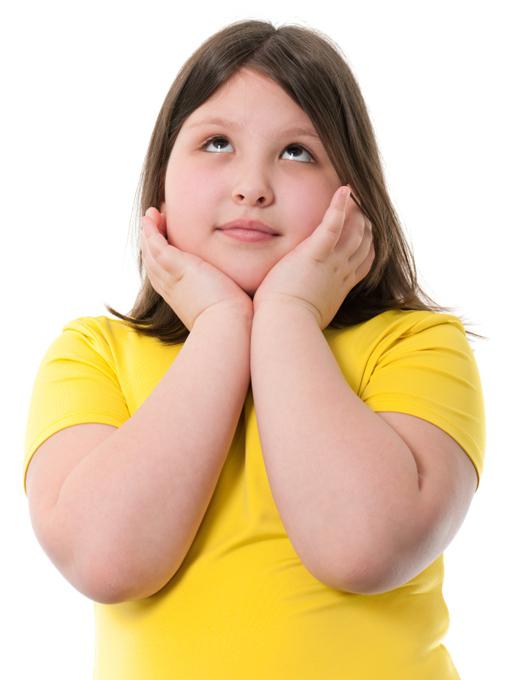
4. Physical and mental stress (the child’s fatigue will greatly affect it).
5. Emotional state. We know that children at this age are impressionable and vulnerable.
6. Diseases of the child. The presence of various pathologies.
7. Environment. Children in the northern regions have lower rates than residents from the southern part of the country.
8. Hereditary factor.
All these components are interconnected. Food intake and the time of day when pressure is measured will also affect the indicators.
What is normal blood pressure for 10 year old children?
There is a formula by which you can calculate the pressure of a particular child yourself. Blood pressure in children 10 years old (normal) is a maximum systolic of up to 120 mm. rt. Art. and up to 70 mm Hg. Art. - diastolic.
Systolic is calculated as follows: 90 + age multiplied by two. This means that for a ten-year-old child it will be 90+10*2=110. Diastolic: 60 + age, which means 60+10=70. The optimal blood pressure of a 10 year old child is the norm - 110/70. Deviations from these indicators by 10-20 units are acceptable, taking into account factors affecting the baby. Of course, you cannot ignore your pulse. You need to pay attention to its rhythm and tension. For a 10-year-old child, this is 75-80 beats in one minute.
How to measure a child's blood pressure correctly
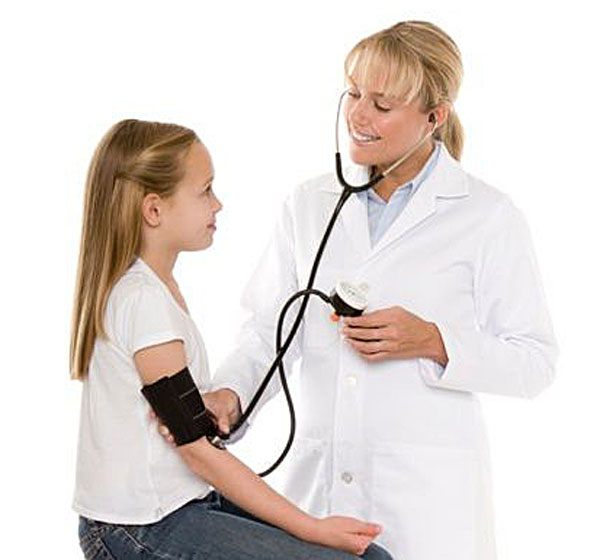
Electronic tonometers are widely used to measure these indicators. They are simple and easy to use at home. When blood pressure is measured in children aged 10 years, the norm should be about 110-120 mm. rt. Art. by 70 mm. rt. Art. These indicators may have deviations in big side, if the child was actively moving before the measurement.
To measure pressure correctly, you need to follow several rules:
- It must be measured in a calm state. It is forbidden to move or talk at this moment.
- You need to use a special cuff for children. Its width should not be more than 2/3 of the shoulder length.
- If measurements are taken at intervals, then it must be measured in one position, sitting or lying down.
It is recommended to measure blood pressure in the morning or after the child has rested for at least 15 minutes. Place your hand at heart level, palm up. The cuff is placed on the bare arm 2-3 cm above the elbow. The hand should not be squeezed by clothing. The cuff does not need to be tightened; there should be room for one finger between it and your hand. The best option for a child is to measure blood pressure 3 times at the same time interval in one position to see the full picture of changes. The lowest readings will be considered more accurate.
Deviations from the norm
If a child has health problems, then it is imperative to monitor blood pressure. When blood pressure is below normal, metabolism is disrupted and tissues are poorly enriched with oxygen. There may be a malfunction in the functioning of internal organs: liver, kidneys, heart, and the endocrine system suffers. If the pressure is higher than normal, vascular ruptures and even hemorrhage may occur, but, fortunately, this happens very rarely in children. If the blood pressure of a 10-year-old child is normal, and the pulse also corresponds to age, then everything is fine with health. If there are deviations from normal values to a lesser or greater extent, diseases such as hypertension or hypotension can already be suspected. It is from the age of ten that a doctor can diagnose these diseases.
Hypertension and its symptoms

IN childhood There are two types of hypertension: primary and secondary. Primary is a temporary increase in pressure associated with physical or emotional stress. This increase is not permanent. We can observe it in completely healthy children.
Secondary hypertension, or arterial hypertension, is a stable increase in blood pressure over a long period of time. It is associated with the presence of certain pathologies in the body:
- Kidney diseases.
- Problems in the endocrine system.
- Hypertension is most often observed in children with overweight prone to obesity.
An increase in pressure in the body, even for a short time, leads to undesirable changes in the functioning of organs. First of all, this affects the functioning of the heart and blood vessels. The vessels narrow, their walls thicken, thereby not providing adequate blood flow to the organs. The heart muscle is poorly supplied, works hard, which means its density increases. As a result, the walls of the arteries thicken, tissue nutrition deteriorates, which weakens the body as a whole.
Children, as a rule, do not feel anything, which cannot be said about the reduced indicators.
Hypotension and its symptoms
If the blood pressure in 10-year-old children is normal and the pulse is normal, then your child is completely healthy. In the case when the indicators are significantly reduced, then we can already talk about hypotension. This can be observed after a long illness or great emotional stress.
Symptoms indicating low blood pressure:
- General weakness is characteristic.
- Fatigue.
- Headache.
- It's difficult to wake up in the morning.
- Increased sweating during physical activity.
First of all, such a child needs to have his heart and blood vessels examined.

Treatment and prevention
How to treat hypertension or hypotension in children? Firstly, you need to conduct a thorough examination to identify the diseases that provoked the increase or In no case should you self-medicate. All medications must be prescribed by a specialist.
To prevent hypertension, proper nutrition plays an important role and healthy image life. Carefully monitor your diet: dishes should not contain a lot of salt and fat. Sitting at the computer, as is now fashionable, should be minimized, move more and do physical exercises. All this combined with proper nutrition will give positive dynamics. If you measure blood pressure over several days and the readings are 120 to 70, then you can say that blood pressure in 10-year-old children is normal. This means your efforts were not in vain.
To prevent hypotension, we put first place physical exercises with gradually increasing loads and, of course, full and healthy eating. Hardening has a very good effect on such children.

The child should take medications strictly under the supervision of his parents. Adults themselves should become an example for their children. If necessary, then reconsider your eating habits and end a sedentary lifestyle. By doing this, you will help your child cope with his illness. The blood pressure of a 10-year-old child plays a big role in his subsequent development and the formation of a maturing organism.
Each age of the child has its own characteristics normal pressure blood inside the vessels, which will ensure a complete and uninterrupted supply of nutrients to the tissues. At the age of 10 years, fluctuations in vascular tone are possible, which can result in both an increase and a decrease in pressure.
What is normal blood pressure for a 10 year old child?
The younger the child is, the lower his blood pressure level is compared to adults. This depends on the size of the blood vessels and the heart, the amount of blood pumped by the heart per unit of time. Indicators of pulse and pressure, along with many others, reflect the child’s health status. Determination of normal blood pressure in children 10 years old, depending on gender, is carried out according to certain tables. The indicators for boys are slightly higher than for girls, and on average, due to active growth, they are close to those for adulthood.
The level of pressure is largely influenced by the gender of the child, his height and weight, physical activity and fitness, the work of the heart itself and the elasticity of blood vessels, and emotional state. The optimal blood pressure level for a 10-year-old child is approximately 110\70 mmHg. Deviations from this indicator within 10-20 units will be quite acceptable, especially as a reaction to a doctor (hypertension white coat), physical activity, etc. To find out your child's exact pressure, it is worth measuring his baseline pressure in the morning, without getting out of bed, immediately after waking up. If you measure it over at least a week, by calculating the average you will get the child's true baseline pressure. You need to build on it, determining whether it corresponds to normal indicators.
In-person measurement of a child's blood pressure will only be carried out using a special children's cuff. It is equal to no more than 2/3 of the length of the child’s forearm, and is selected according to age and hand size.
High blood pressure in a 10 year old child
Increased blood pressure or hypertension in children can occur as an independent disease or as a manifestation of any pathology. Independent pathology - hypertension, which has unknown causative factors, is rare in children. With it, pressure rises are typical, disrupting well-being and general condition. More often, increased blood pressure in children is associated with kidney disease, disturbances in the metabolism of hormones (especially adrenal or thyroid glands), excess weight, heart and vascular diseases. Such hypertension disappears when the underlying disease is treated and is only a manifestation, a symptom of the disease. Her children hardly feel any symptoms, or they only experience headaches when getting up suddenly.
Low blood pressure in a 10 year old child
Much more often, children experience low blood pressure as a result of poor vascular training (weak vascular tone). This may occur against the background of asthenia after long illness and bed rest, with emotional stress, with severe thinness and poor appetite, lack of adequate exercise. Manifestations of low blood pressure include constant weakness and lethargy, drowsiness, and heaviness in the head. The child gets tired quickly, his head is buzzing and hurts, it is difficult to wake up in the morning and swing, he sweats a lot during physical activity and quickly runs out of energy. Hypotension is subjectively tolerated by children worse than increased blood pressure. Therefore, drugs and means are indicated to stimulate vascular tone and normalize blood pressure.
Since not only the adult and elderly population, but also children and adolescents need to measure blood and pulse pressure, many parents often ask the question: “What pressure is normal for a 10-year-old child, and what is considered a deviation?” What if it’s a baby, preschooler or teenager? What are their meanings? Let's try to understand the question of what normal blood pressure a child should have in different periods his life.
What do heart rate and blood pressure indicators indicate?
Data from these two components make it possible to characterize the state of the human cardiovascular system. Deviations in indicators indicate serious problems in the body. These can be either independent diseases or a consequence of other types of developing diseases.
Blood pressure concept
This is common to the walls of blood vessels. It has 2 main parameters: systolic (upper), indicates the pressure at maximum contraction of the heart at the moment of blood ejection, and diastolic (lower), on the contrary, indicates pressure on the walls of blood vessels when the heart muscle is maximally relaxed. The difference between the upper and lower values is an indicator of pulse pressure.
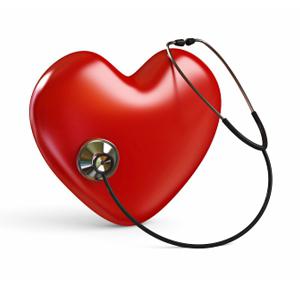
Do people have the same blood pressure?
At different periods of human life, measuring blood pressure shows different values. When a baby is born, his blood pressure is low. The older he is, the higher his blood pressure, since the tone of blood vessels increases over the years and their elasticity is lost. Typically, systolic and pulse pressures add up to 200.
Normal blood pressure levels in children
The generally accepted average norm is considered to be 120/80 mm Hg. This indicator characterizes good health in adults. Everyone has their own norm, which can be influenced even by factors such as living in urban or rural conditions, hereditary predisposition, and dietary patterns (for example, a tendency to overly salty foods). To operate with knowledge of what is considered the norm, you can resort to various formulas and techniques. All of them provide universal indicators for children of different physiques and constitutions, be it, for example, tall or short, thin or plump.
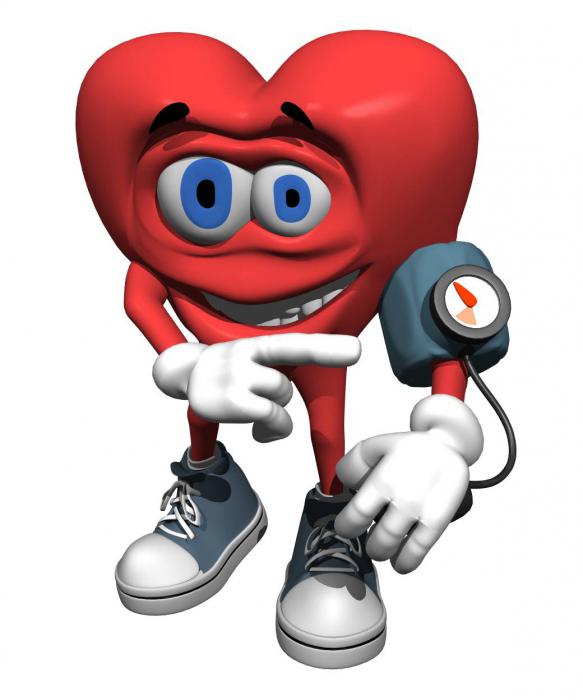
So what is the blood pressure in children? For newborns and children up to one year old, the acceptable systolic pressure formula is 76 + 2x, where x is the number of months of the child. Diastolic is 2/3 - 1/2 of the maximum upper one. To measure pressure in children older than one year, they resort to I.M. Voronin’s formula: for systolic it is 90 + 2x, diastolic - 60 + x, where x is a quantitative indicator of age in years. As an example, we will give it should be 110/70 (90+2x10/60+10). The lower limit of normal systolic pressure should not exceed 75+2x, the upper limit - 105+2x. The calculation for the diastolic indicator is similar: the permissible minimum is 45+x, the maximum is 75+x. Consequently, the blood pressure of a 10-year-old child (normal permissible values) can fluctuate between 95-125/55-85.
Table of pressure for children of different ages (minimum and maximum permissible parameters)
| Age of children (in years) | Pressure | |
| Upper | Lower | |
| Newborn | 60 - 96 | 40 - 50 |
| 1 month | 80 - 112 | 40 - 74 |
| 1 | 90 - 112 | 50 - 74 |
| 2 - 3 | 100 - 112 | 60 - 74 |
| 4 - 5 | 100 - 116 | 60 - 76 |
| 6 - 9 | 100 - 122 | 60 - 78 |
| 10 - 12 | 110 - 126 | 70 - 82 |
| 13 - 15 | 110 - 136 | 70 - 86 |
How to measure blood pressure correctly?
To determine what pressure is acceptable in children at a particular age, you should use a device for measuring it - a tonometer (there is an automatic or semi-automatic one). A very popular electronic device at home. When measuring pressure, the child's arm should be extended, palm facing up. A rubber cuff covered with fabric is attached to the bare forearm at a 2-3-centimeter distance from the elbow bend (so that the index finger can fit freely under it). The phonendoscope is placed on the pulsating artery at the elbow. Air is inflated into the cuff until the pulse disappears. When you open the valve and slowly deflate the air from the cuff in a phonendoscope, you need to listen to the first and last sound tones, which will be indicators of systolic and diastolic pressure, respectively.
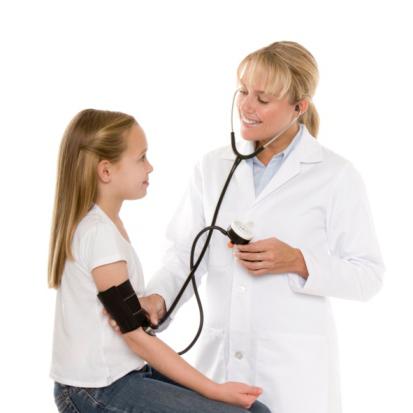
Measurement Features
To obtain more accurate values, it is more correct to measure blood pressure in children immediately after sleep or a short rest, since physical and emotional activity helps to increase parameters. Caffeine can affect the results, so it is better to avoid products containing it at least an hour before taking measurements. For greater accuracy of readings, it is better to purchase tonometer cuffs specially designed for children. For children of different ages, the width of the cuff will vary. So, it will be (in cm): for newborns - 3; for children under one year old - 5; preschool children - 8; teenagers - 10. It is believed that the lower edge of the cuff cannot be higher than 2-3 cm from the cubital fossa. For children under 2 years of age, measurements are taken in a lying position, for other age categories - lying, sitting, even standing. It should be understood that measuring blood pressure in children on both arms can give different indicators. It is better to take measurements 3 times, after a few minutes each, and in the same position. The correct indicator will be considered the smallest value obtained. Sometimes an increase or decrease in blood pressure can be a consequence of a child’s fear of visiting hospitals or rejection of doctors in white coats. If your child does not complain of being unwell, it makes sense to recheck him in a calm home environment.
What if it's not the norm?
As a rule, until the age of 5, the pressure in boys and girls is equal, at 5-9- summer age for boys it is a little higher. With an increase in the load on the heart muscle, systolic pressure indicators are generally higher in all adolescents (at 12-14 years old for girls and at 14-16 years old for boys). Promotion is especially important for plump people.
![]()
A few words about hypertension
Blood pressure above the maximum permissible norm without obvious signs, for example, as a result of puberty changes in the body, stress, minor motor activity, including in the fresh air, indicates possible primary hypertension. For the most part, this is not even a disease, but some kind of response of the body to external signals.
High levels of upper blood pressure are an alarming sign indicating dysfunction of the thyroid gland and anemia. If both the upper and lower values are too high, it is worth checking the functioning of the adrenal glands, heart, central nervous system and especially the kidneys. This is already secondary hypertension. It is important to eliminate the cause of the primary disease. Eating black currants has a good effect on reducing blood pressure.
Who is at risk for hypotension?
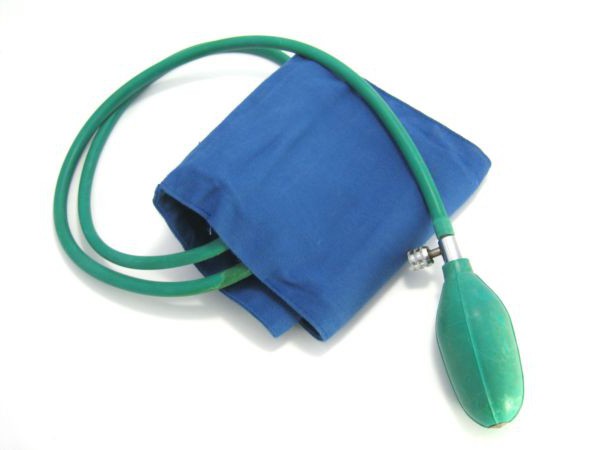
On the contrary, or hypotension indicates fatigue, weakness of the body, and dizziness. Not so dangerous, more typical for asthenics. It is observed during infections, fasting, shock, fainting, heart attacks, etc. Hardening, sports, and caffeine (in moderate doses) can restore normality.
Regardless of what blood pressure a 10-year-old child has - whether it is normal or abnormal - if he is not feeling well, he should definitely consult a doctor.
How often do you hear from your child that he is tired at school, in physical education he cannot perform standard loads, mental stress (doing homework) prefers sleep? If this sounds familiar to you, then you need to monitor your baby’s blood pressure (BP).
Blood pressure in children aged 10 to 14 years, during puberty, may increase. This is due to hormonal levels, but often strenuous physical activity (sports) can be a provoking factor.
But blood pressure surges do not always occur due to stress; physiological reasons are possible. For example, improper functioning of the thyroid gland, VSD, weak nervous system, exposure to stress, diabetes, thinness or, conversely, excess weight, problems with the central nervous system, even lack of physical activity.
The effect of blood pressure on general well-being is easy to notice; these can be:
- Headaches,
- fatigue,
- increased breathing,
- increased heart rate, etc.
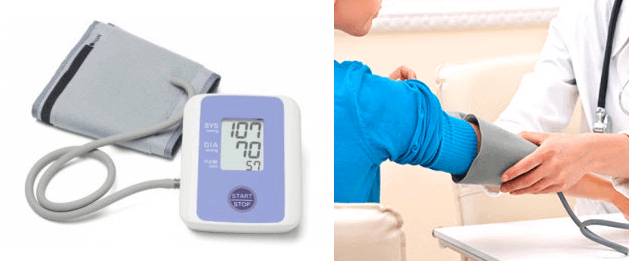
How to measure your child's blood pressure yourself? To begin with, the child must be completely calm, not run or eat for at least 10 minutes, because... this may cause a sharp increase in blood pressure and the measurement algorithm will not be accurate.
Then take a device for measuring blood pressure (tonometer), it is good if the cuff is for children, since an adult covers the entire shoulder of the child, and the results may not be correct.
If you use a mechanical tonometer, then fix the cuff on your shoulder, use a bulb to pump air into it, use a phonendoscope to listen to the pulse on your arm until it disappears, then release the air, listen to the first knocks while looking at the reading scale, this knock will be the upper blood pressure (systolic), and the last beat is lower (diastolic).
How to correctly measure blood pressure in a child?
What is the normal blood pressure for 10 year old children according to the table?
As you can see from the table, the table of normal blood pressure in children by age from 10 to 12 years is the minimum pressure readings 110 to 70 and the maximum 126 to 82. To control the pressure measurement, it is repeated and the average arterial pressure is taken. In children aged 9-12 years, the normal blood pressure is 110/70.
Hypertension and its symptoms

Hypertension is high blood pressure in children and adults.
If you notice your 9 or 12 summer child symptoms:
- dizziness,
- congestion in the ears,
- rapid heartbeat,
- blurred vision
- pulsation in temples.
If measured with a tonometer, the blood pressure will be higher than normal, then this is definitely hypertension.
But it can also be a symptom of increased intracranial pressure in children. Signs of intracranial pressure in a child from 9 to 12 years old are difficult to recognize without having a tomography done, but a newborn and a 1-2 year old baby cannot tell what is hurting them.
However, tearfulness, weakness, vomiting, difficulty breathing, a large forehead, and bulging fontanel may indicate ICP in the baby. The cause of increased intracranial pressure in children may be trauma during childbirth. In such cases, a visit to the doctor is mandatory.
Causes of high blood pressure

High blood pressure in a 12-year-old child may be a consequence of the onset of puberty. Blood pressure in children 9 years of age and older can fluctuate constantly. The level may rise sharply (a symptom of hypertension) even due to bad mood or fatigue, the breathing rhythm also becomes disrupted. Normalization of such an increase usually occurs on its own. The causes of high blood pressure may also be heredity and predisposition.
Causes of low blood pressure

Low blood pressure in a child, or hypotension, is often associated, like hypertension, with puberty. Thyroid dysfunction and excess weight, anemia, diabetes, possible head injuries (concussions) and other physiological characteristics can lead to normal level BP is low.
Systolic

The upper pressure can be calculated using the formula. For children less than a year old The formula is suitable: 76+2n, 76 is the average value of upper blood pressure, and “n” is how old your baby is. If you have a 9 or 10 year old offspring, then the average value will be 90, i.e. 90+2n. It turns out that the child’s systolic pressure will be 90+2*9=108.
Diastolic
Pulse and rate measurement

Just like blood pressure, you can also calculate a child’s pulse; the pulse of a 10-12 year old child is normally 80 beats per minute, and the respiratory rate is 18-20. Before measurement, children need to calm down, since their pulse and breathing rates may increase during periods of activity.
If the baby is one year old, then you can notice a fairly high heart rate - from 120 to 128 beats per minute and 30-35 breathing movements. For children aged two to three years, the norm will be considered to be from 100 to 110 beats per minute.
The measurement technique is very simple, place two fingers on the veins at the wrist and, noting the time, calculate how many beats per minute you count, so many values equal to the heart rate. The average is normal, depending on the age of the children.
Accelerated heart rate
An increase in heart rate in children is a normal phenomenon during stress or emotional outburst. But if the baby lies and is at rest, and the pulse is rapid (2-3 times), then this is already a symptom. It could be tachycardia. It is detected by a cardiologist and requires treatment.
Slow heart rate
A decrease in heart rate is not always a sign of illness, and it is not necessary to normalize the heart rate. But if the pulse is below 60 beats per minute and the baby experiences dizziness and pressure surges, then this may be a sign of bradycardia.
When playing sports
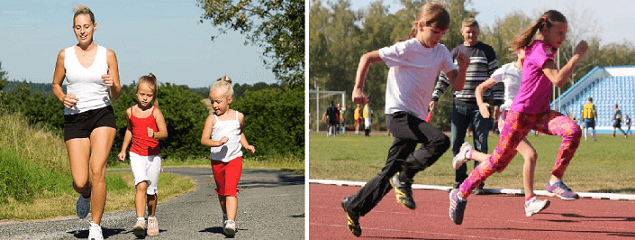
As mentioned above when physical activity, Heart rate, blood pressure and respiratory rate may increase. Therefore, if there are heart problems or children find it difficult to breathe (shortness of breath), warn physical education teachers so that they do not burden them and can provide first aid in a timely manner.
Treatment
If your child has heart problems (possibly a defect or arrhythmia) and breathing problems, you should know how to normalize blood pressure and, most importantly, be able to determine blood pressure and heart rate yourself. Only a cardiologist can prescribe the correct treatment. For diagnosis, daily monitoring of blood pressure (ABPM-24-hour blood pressure monitoring) may be prescribed.



